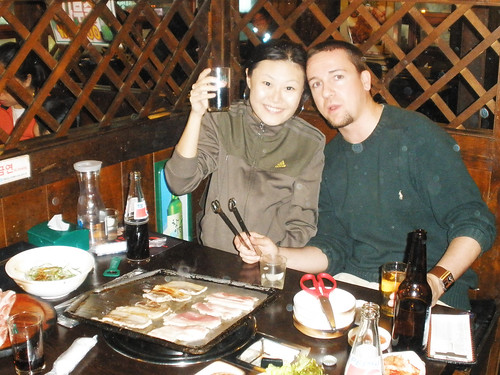
I went out for barbecue (technically called gui [구이]) with Tony and Christine. Korean barbecue is some of the more western friendly Korean food. Traditionally, the meat is cooked at the center of the table over a charcoal grill. Like all Korean meals, it comes with banchan (반찬), or side dishes. The number of banchan at your average Korean meal is truly insane. Barbecue only comes with a few banchan (I can see four in the picture), but I've been to more formal meals where we ate side dishes for an hour and by the time the actual meal came, I was too full to eat it.
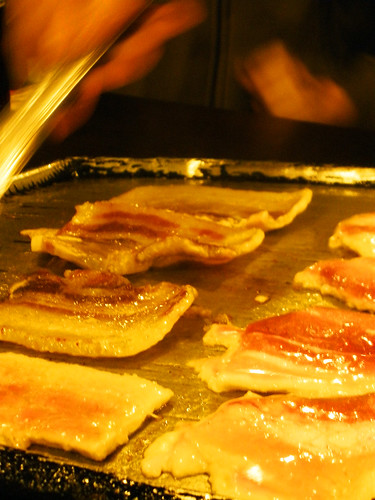
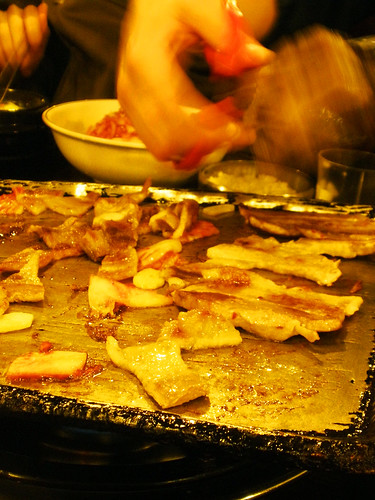
There are many types of Korean barbecue, but we went out for samgyeopsal (삼겹살). Samgyeopsal is unmarinated thick, fatty slices of pork belly. It's like really thick bacon or, as Tony puts it, super bacon! First you cook the meat in strips. Once the strips are sizzling and brown, you cut them into bite sized pieces and let them cook some more. (You cut the meat with scissors. It's fairly common to be given scissors with your meal. Knives aren't a common utensil, and while the Koreans are very adapt at cutting pretty much anything with chopsticks, sometimes a little extra help is needed.) We're cooking garlic and kimchi along with the pork.
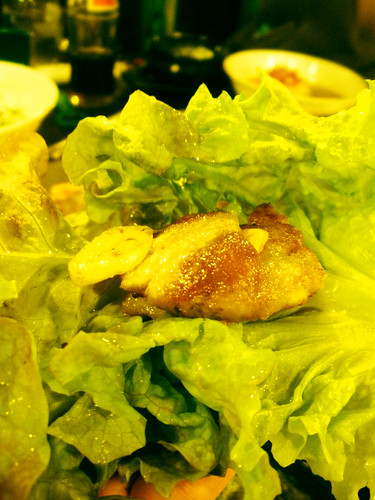
Once everything is cooked, you pile your pork, garlic, kimchi and ssamjang (not pictured, but it's a red paste consisting of red chili paste and fermented soybean paste) onto a lettuce leaf and chow down. Om nom nom nom! It's also tasty to eat the pieces separately.
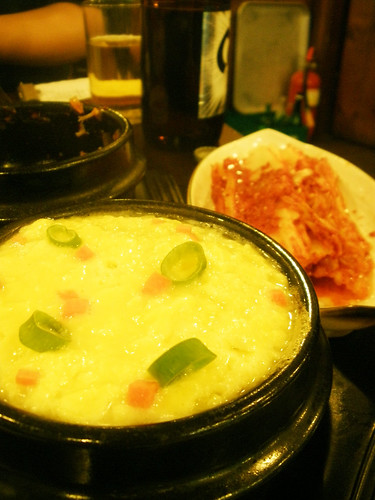
In addition to the samgyeopsal, we ordered gyeranjjim. Gyeranjjim is a steamed egg dish with green onions and carrots that is oh so tasty. I found a recipe here.
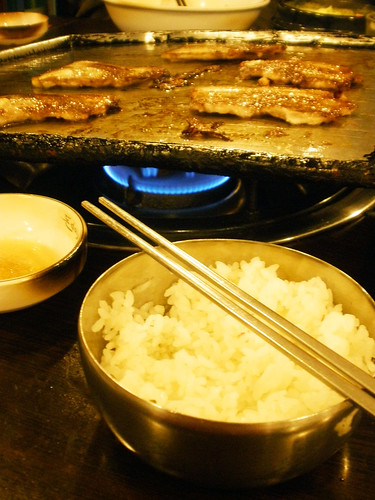
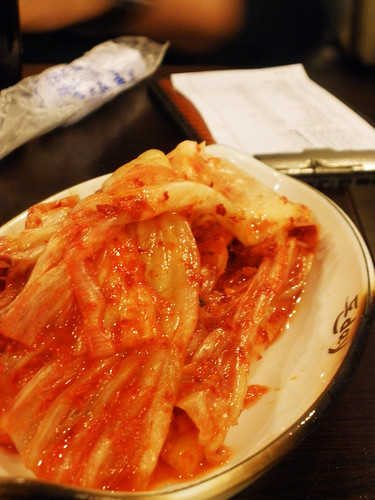
Of course, no Korean meal is complete without rice (left) and kimchi (right). Both are staples of the Korean diet. A bowl of plain white rice (sticky rice) is traditionally served with each meal. Then there is kimchi. Kimchi (김치) is probably the most quintessential Korean object there is. It is certainly the most quintessential Korean food. (It is so common that the KARI [Korea Aerospace Research Institute] developed space kimchi for the first Korean astronaut to take with him to space. Which, ahahahahahaha! Of course they did. Here, let me quote the New York Times: "Three top government research institutes spent millions of dollars and several years perfecting a version of kimchi that would not turn dangerous when exposed to cosmic rays or other forms of radiation and would not put off non-Korean astronauts with its pungency." That pretty much sums up kimchi.) Kimchi is spicy pickled vegetables, the most common being picked cabbage, that Koreans eat it at every meal. According to Koreans, it is basically magic. It will prevent anything that needs preventing and cure anything that needs curing. (I have honest to God been told that the reason there are no gay people in Korea is that kimchi cures homosexuality, although I have on good authority that this is not actually true.) It's not actually as gross as it sounds. I like it in its more diluted forms, such as in soups (although not kimchi soup) or cooked with samgyeopsal. I still won't eat it on its own, though.

No comments:
Post a Comment